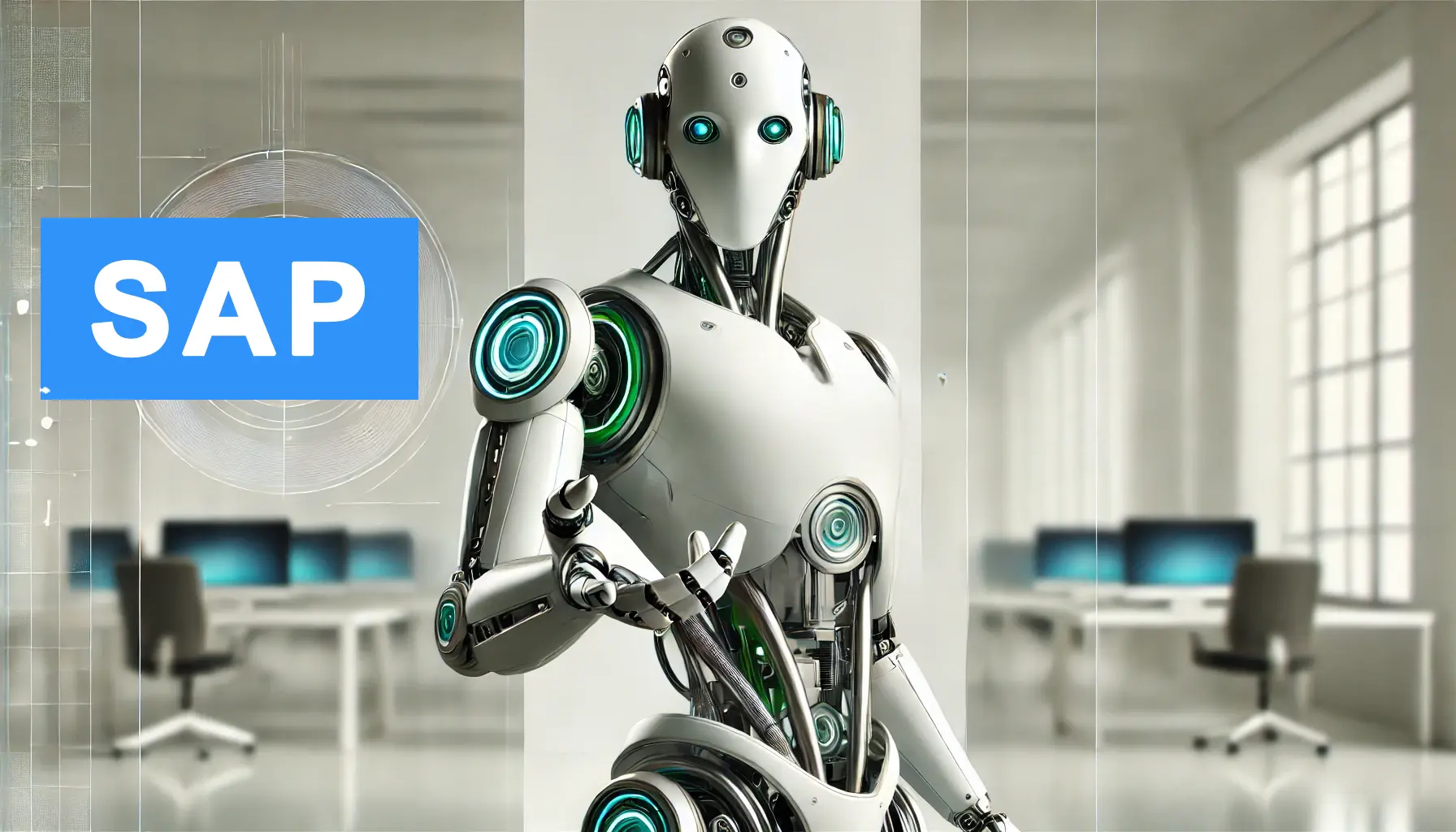
Generative AI is reshaping industries, and SAP S/4HANA users are uniquely positioned to harness its potential. Let’s explore how generative AI can transform your enterprise resource planning (ERP) system.
Understanding Generative AI and SAP S/4HANA
What is Generative AI?
Generative AI refers to advanced models capable of creating content, such as text, images, or code, based on given inputs. These tools, like OpenAI’s models, are revolutionizing productivity and decision-making in business.
How Does SAP S/4HANA Work?
SAP S/4HANA is a robust ERP platform designed to integrate all business processes into a single, intelligent system. It offers real-time analytics, predictive insights, and automation to streamline operations.
The Role of Generative AI in ERP
Integrating generative AI into SAP S/4HANA can:
- Enhance user experience with intuitive conversational interfaces.
- Automate workflows, saving time and reducing manual errors.
- Generate actionable insights from complex datasets.
Benefits of Integrating Generative AI
Enhanced Decision-Making
AI models can analyze vast datasets, providing tailored recommendations for supply chain optimization, sales strategies, or workforce planning.
- Imagine auto-generated forecasts based on historical data trends.
- AI-powered insights can make identifying opportunities and risks faster.
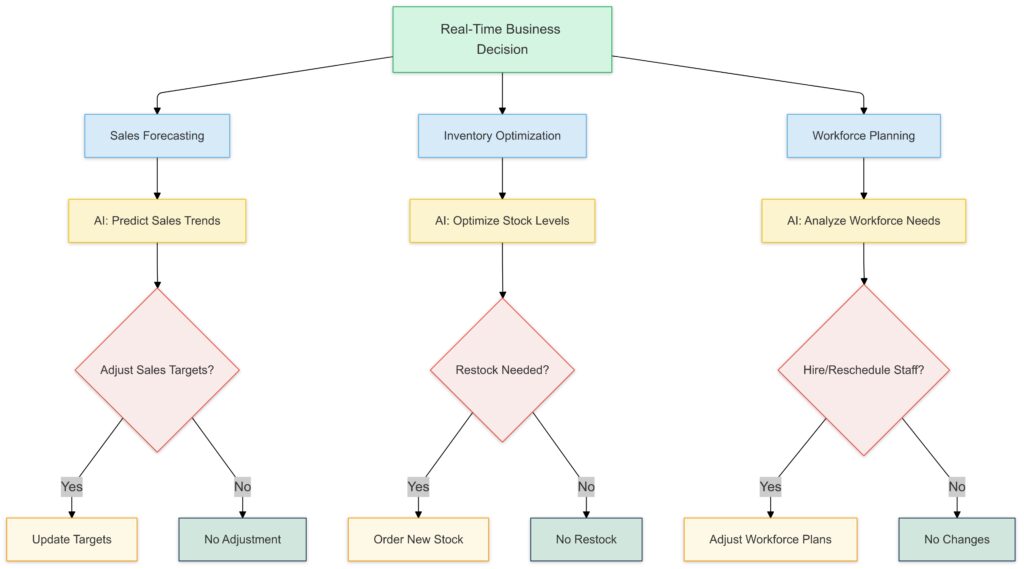
Sales Forecasting:AI predicts sales trends and recommends target adjustments.
Inventory Optimization:AI optimizes stock levels and determines restocking needs.
Workforce Planning:AI analyzes workforce requirements to suggest hiring or schedule changes.
Logic Flow:
Each decision node evaluates conditions (e.g., validity, confidence).
Actions are initiated if conditions are met; otherwise, the status remains unchanged.
AI Role:
Highlights AI modules that assist in predictions, classifications, and optimizations.
Personalized User Experiences
Generative AI enables natural language processing (NLP) capabilities, like chatbots and virtual assistants, directly in SAP S/4HANA.
- Employees can interact using conversational queries like, “What’s the stock availability for product X?”
- These tools simplify navigation, reducing reliance on complex menus or reports.
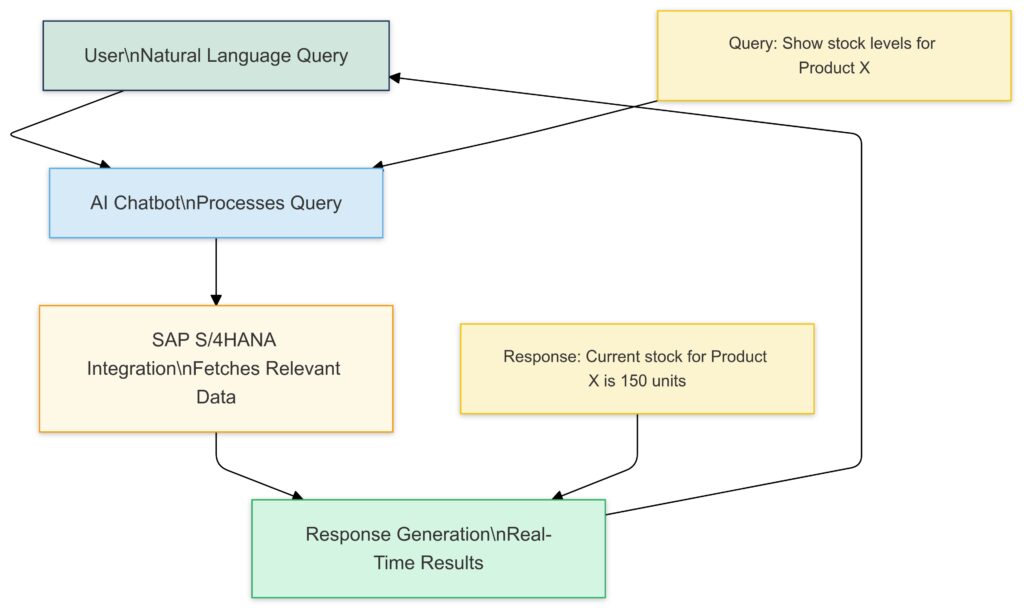
Automating Routine Tasks
Repetitive activities, like invoice processing or data entry, are ideal for automation.
- Generative AI can draft documents such as purchase orders, based on template data.
- It ensures compliance by validating entries against preset business rules.
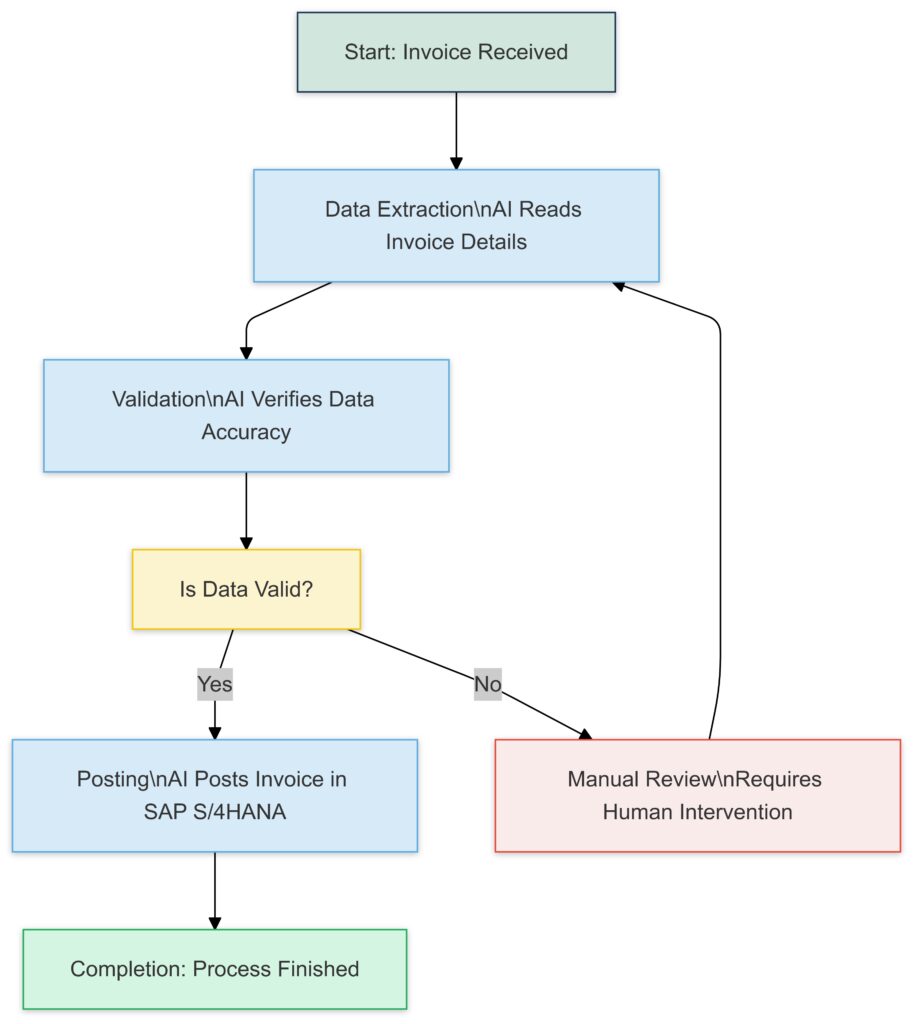
This workflow emphasizes the points where AI eliminates manual intervention, enhancing efficiency.
Real-World Use Cases
Streamlining Financial Management
Finance departments can automate reporting and reconciliation processes.
- AI-driven tools generate accurate financial forecasts based on current and historical patterns.
- This reduces errors in audits and expedites closings.
Optimizing Supply Chain Operations
Predictive AI models foresee demand fluctuations, while generative AI drafts optimal supply plans.
- Scenario planning becomes seamless with AI-suggested alternatives for disruptions.
- Inventory can be managed more precisely, avoiding stockouts or surpluses.
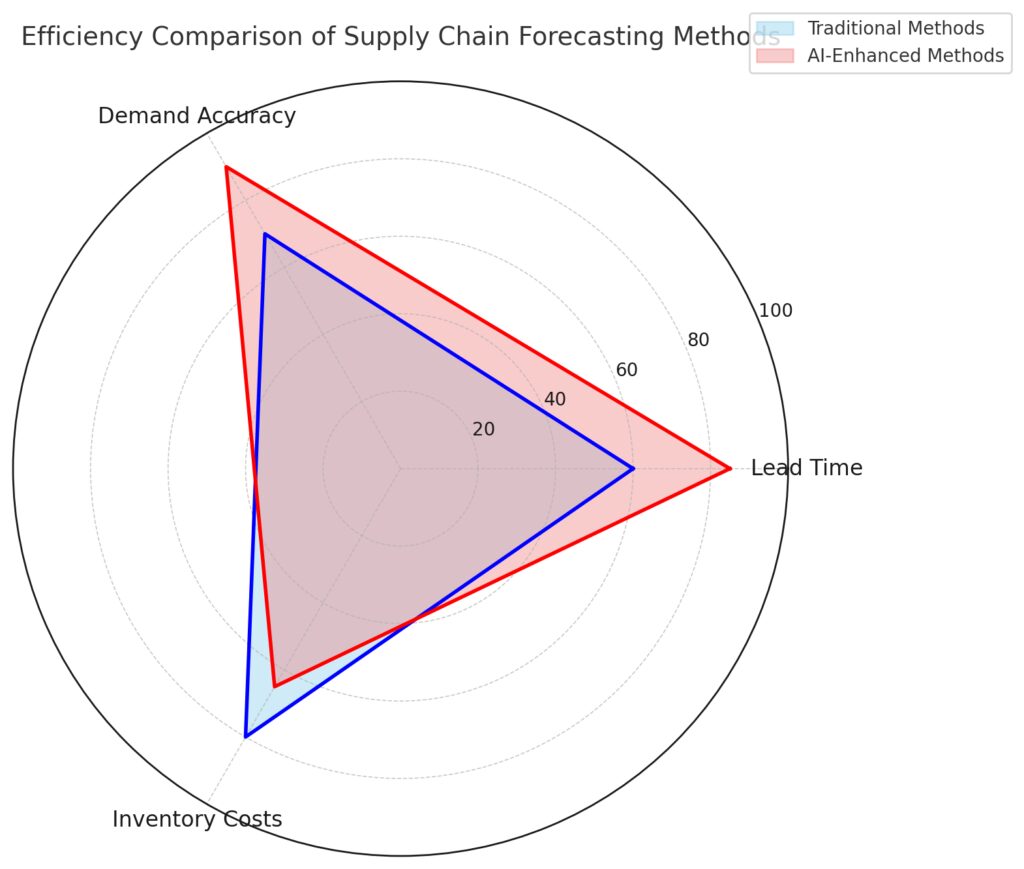
Lead Time:
- AI-enhanced methods outperform traditional approaches with significantly reduced lead times.
Demand Accuracy:
- AI-enhanced forecasting achieves greater precision in predicting demand.
Inventory Costs:
Traditional methods show lower costs, potentially due to conservative stocking strategies.
Talent Management and HR
Generative AI automates recruiting processes, such as creating job descriptions or shortlisting candidates.
- Employee training paths can be personalized based on performance data in SAP S/4HANA.
- Chatbots address employee queries, improving response time and satisfaction.
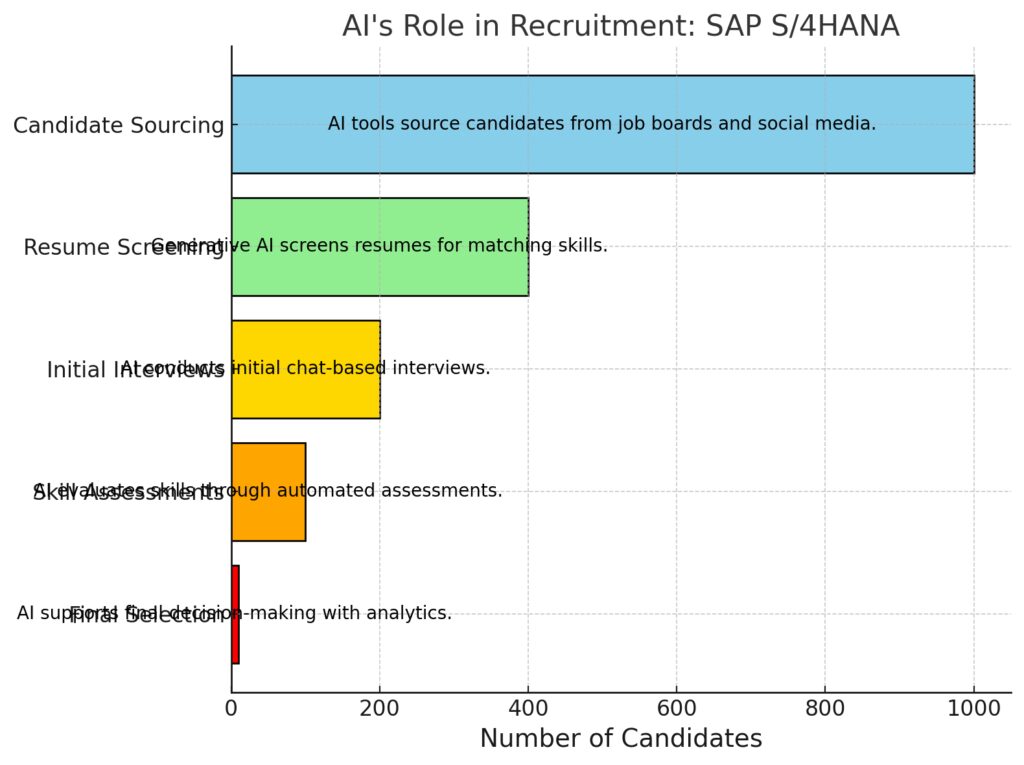
Candidate Sourcing:
AI tools scrape job boards and social media platforms to source candidates.
Resume Screening:
Generative AI matches resumes with job descriptions, identifying top candidates.
Initial Interviews:
AI-powered chatbots conduct initial interactions to assess basic fit.
Skill Assessments:
AI evaluates skills through automated testing platforms.
Final Selection:
AI provides data-driven analytics to support final decision-making.
Integrating Generative AI into SAP S/4HANA
Understanding Key Integration Points
To maximize benefits, businesses need to identify areas where SAP Fiori apps, workflows, or custom processes intersect with AI capabilities.
Leveraging SAP Business Technology Platform (BTP)
The SAP Business Technology Platform (BTP) acts as a bridge for integrating generative AI into S/4HANA.
- Use AI Core Services to deploy and manage AI models alongside ERP data.
- Incorporate SAP Conversational AI to build intelligent assistants.
Key Steps for Integration
- Define Use Cases:
Start with specific goals—like improving sales forecasting or automating report generation. - Select AI Models:
Choose pre-trained models or fine-tune custom ones based on your industry. - Integrate with APIs:
Use SAP’s open APIs or third-party connectors to seamlessly link AI with S/4HANA workflows. - Test and Scale:
Start small by testing with a subset of users, then scale once results show value.
Tools to Consider
- SAP AI Core: Centralize AI lifecycle management.
- SAP Process Automation: Integrate generative AI into repetitive workflows.
- Third-Party AI Solutions: Enhance capabilities with proven tools like ChatGPT or DALL·E.
Overcoming Integration Challenges
Data Security and Compliance
Ensure data privacy by adhering to standards like GDPR or industry-specific regulations. Generative AI solutions must be embedded securely within SAP’s role-based access controls.
Model Training and Customization
Generative AI needs high-quality training data to perform well. Integrating clean, structured ERP data from SAP S/4HANA is key.
Change Management
Employee training and adoption are critical. AI can disrupt workflows, so clear communication about benefits is essential.
Conclusion
The future of ERP lies in generative AI, and SAP S/4HANA is primed for this transformation. By enhancing decision-making, automating tasks, and offering personalized experiences, businesses can unlock unprecedented value.
Ready to explore integration? Start small, iterate, and let AI drive smarter operations in your SAP S/4HANA environment.
FAQs
How can generative AI enhance reporting in SAP S/4HANA?
Generative AI can automatically draft reports using ERP data. For example, finance teams can generate detailed quarterly performance reports by inputting parameters like the reporting period and required metrics.
AI models can also visualize data trends, making insights easier to interpret for decision-makers. Instead of manual consolidation, the AI does the heavy lifting, delivering instant, accurate summaries.
Is generative AI compatible with SAP Fiori apps?
Yes, generative AI integrates seamlessly with SAP Fiori apps to create intuitive user experiences. For instance, employees can use natural language to query sales data through a chatbot embedded in a Fiori app.
This reduces the need for technical know-how and simplifies processes like pulling inventory data or generating invoices.
What industries benefit most from this integration?
Industries with complex workflows and large data volumes, such as manufacturing, retail, and healthcare, gain the most from AI integration.
In manufacturing, generative AI can improve supply chain forecasts and optimize resource allocation. In retail, it can create personalized marketing strategies by analyzing customer data stored in SAP S/4HANA.
Can generative AI assist in compliance and risk management?
Absolutely. Generative AI can cross-check entries against compliance standards and flag anomalies. For example, during financial audits, AI can detect unusual transactions or suggest corrections to ensure compliance with regulations.
AI-driven insights also help risk teams anticipate and mitigate potential disruptions by analyzing historical and real-time data trends.
What tools are needed to integrate generative AI with SAP S/4HANA?
Key tools include:
- SAP Business Technology Platform (BTP) for managing AI workflows.
- SAP AI Core for deploying and monitoring models.
- Third-party APIs for leveraging external AI solutions like ChatGPT.
For example, businesses can use SAP Conversational AI to create virtual assistants that enhance customer service or employee support.
Is data security a concern when integrating generative AI?
While generative AI offers immense potential, data security is paramount. SAP S/4HANA already supports robust access controls and encryption. By integrating AI within these frameworks, sensitive information remains protected.
For instance, role-based access ensures only authorized personnel can interact with or view AI-generated outputs, reducing risks.
Can generative AI help with employee onboarding?
Yes, generative AI can personalize and streamline the onboarding process. AI can generate tailored training materials, simulate onboarding scenarios, or guide new employees through SAP S/4HANA’s features via interactive chatbots.
This improves learning retention and accelerates the onboarding timeline.
How does generative AI improve decision-making in SAP S/4HANA?
AI analyzes vast amounts of structured and unstructured data to suggest actionable insights. For example, sales managers can get recommendations for pricing adjustments or demand trends, enabling quicker, more informed decisions.
Generative AI also helps create “what-if” scenarios, giving teams the ability to plan for multiple outcomes.
Can small businesses benefit from integrating generative AI with SAP S/4HANA?
Absolutely. Even small businesses can gain by automating routine tasks, generating custom reports, and enhancing customer experiences.
For example, a small retailer could use generative AI to create inventory replenishment plans or personalized email campaigns, saving time and increasing efficiency.
Can generative AI assist with predictive maintenance in manufacturing?
Yes, generative AI can play a crucial role in predictive maintenance. By analyzing sensor data from machinery connected to SAP S/4HANA, AI can identify patterns signaling potential failures.
For example, it might detect anomalies in a machine’s vibration patterns and recommend preventive action before costly downtime occurs.

How does generative AI support customer relationship management (CRM)?
Generative AI enhances CRM by analyzing customer behavior data in SAP S/4HANA to offer actionable insights.
For instance:
- AI can suggest personalized product recommendations based on past purchases.
- It can also automate follow-up email drafts, tailored to specific customer interactions, saving sales teams valuable time.
What are the first steps to implement generative AI in SAP S/4HANA?
Start with a clear roadmap:
- Identify pain points: For example, slow reporting processes or manual workflows.
- Select a use case: Start small, like automating report generation or chat-based queries.
- Choose tools and platforms: SAP BTP, pre-trained AI models, or third-party integrations.
Testing on a limited scale ensures the integration aligns with your goals before expanding.
How does generative AI improve supply chain efficiency?
Generative AI forecasts demand, optimizes routes, and drafts efficient procurement plans.
For example, it can analyze past sales trends and external factors, like seasonal demand spikes, to suggest inventory adjustments. AI can also automate purchase order creation, reducing delays in the supply chain.
Can generative AI integrate with legacy systems alongside SAP S/4HANA?
Yes, generative AI can bridge gaps between legacy systems and SAP S/4HANA through middleware solutions or APIs.
For example, an older database used for warehousing can feed data into SAP S/4HANA using AI connectors, enabling predictive analytics and automated workflows across both platforms.
How is generative AI different from traditional automation in SAP?
Traditional automation focuses on repetitive tasks, following predefined rules. Generative AI goes a step further by:
- Creating content or suggestions based on context.
- Adapting to complex, unstructured data inputs.
For example, while traditional automation might process invoices, generative AI can draft invoice templates, flag discrepancies, or predict payment delays.
What challenges might arise during AI integration?
Potential challenges include:
- Data Quality Issues: AI models require clean, structured data for optimal performance.
- Change Resistance: Employees may need training and assurance to trust AI-driven processes.
- Cost of Implementation: Initial setup and customization might require investment, especially for advanced use cases.
Addressing these challenges with proper planning and communication can ease the transition.
Can generative AI assist in sustainability efforts within SAP S/4HANA?
Yes, generative AI can optimize resource use and reduce waste.
For example:
- AI models can draft energy-efficient production schedules by analyzing energy consumption patterns.
- It can also help businesses track and report carbon emissions automatically, improving compliance with sustainability goals.
What role does SAP Data Intelligence play in generative AI integration?
SAP Data Intelligence acts as a key enabler for integrating generative AI by managing data pipelines across hybrid landscapes.
For instance, it can combine ERP data from SAP S/4HANA with external sources, like market trends or IoT data, ensuring AI models have a comprehensive dataset for accurate predictions or content generation.
Are there any pre-built solutions for generative AI in SAP ecosystems?
Yes, SAP provides several pre-built AI models and tools via its Business Technology Platform. For example:
- SAP Intelligent Robotic Process Automation: Combines generative AI and traditional RPA to automate workflows.
- SAP AI Business Services: Offers features like document processing and machine learning-based recommendations that integrate directly into SAP S/4HANA.
These ready-to-use solutions accelerate deployment and reduce development costs.
Resources
Official SAP Resources
1. SAP Business Technology Platform (BTP)
Explore SAP’s platform for building and integrating AI tools with S/4HANA. Learn about AI Core, AI Business Services, and other tools.
- Visit: SAP BTP Overview
2. SAP Help Portal
Access detailed guides and documentation for SAP S/4HANA and AI-related services.
- Visit: SAP Help Portal
3. SAP Community
Engage with a global community of SAP developers, experts, and users to find best practices and troubleshooting tips for AI integrations.
- Visit: SAP Community
4. SAP Conversational AI
Learn how to create intelligent chatbots tailored for your business workflows.
- Visit: SAP Conversational AI
5. SAP Training and Certification
Upskill your team with certifications on SAP AI and S/4HANA technologies.
- Visit: SAP Training
AI and Technology Platforms
6. OpenAI API Documentation
For integrating external generative AI tools like ChatGPT or DALL·E with SAP systems, OpenAI’s API documentation provides essential guidance.
- Visit: OpenAI Documentation
7. Microsoft Azure AI Services
SAP S/4HANA is compatible with Azure cloud services. Azure AI tools can supplement your integration with generative AI.
- Visit: Azure AI
8. Google Cloud AI and Machine Learning
Explore AI and ML models that can integrate with SAP systems for advanced analytics and automation.
- Visit: Google Cloud AI
Blogs and Thought Leadership
9. SAP Blogs
Stay updated with the latest trends, use cases, and tutorials directly from SAP experts.
- Visit: SAP Blogs
10. Generative AI in Business by Gartner
Insights on how businesses can leverage generative AI across various domains, including ERP systems like SAP S/4HANA.
- Visit: Gartner on Generative AI